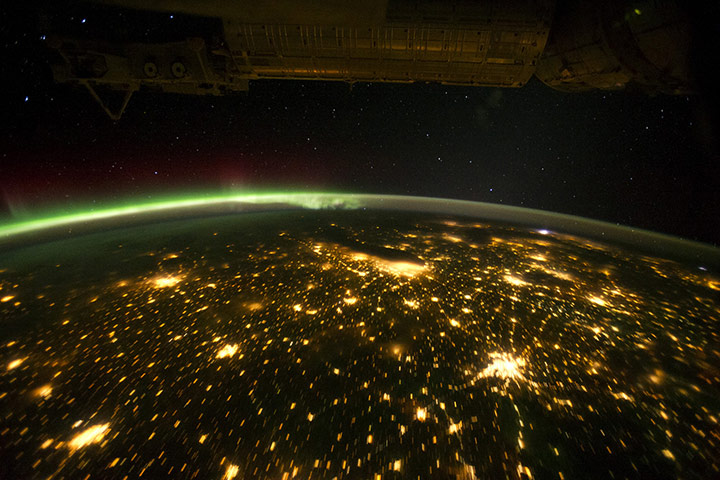A beautiful video that shows the extent of human activity over the Earth’s surface.
Earth | Time Lapse View from Space | Fly Over | Nasa, ISS from Michael König on Vimeo.
Time lapse sequences of photographs taken with a special low-light 4K-camera
by the crew of expedition 28 & 29 onboard the International Space Station from
August to October, 2011.
HD, refurbished, smoothed, retimed, denoised, deflickered, cut, etc.
Music: Jan Jelinek – Do Dekor (Loop-Finding-Jazz-Records) | ~scape 007 cd
http://www.janjelinek.com | http://www.scape-music.de
Editing: Michael König | http://www.koenigm.com
Image Courtesy of the Image Science & Analysis Laboratory,
NASA Johnson Space Center, The Gateway to Astronaut Photography of Earth
http://eol.jsc.nasa.gov
Shooting locations in order of appearance:
1. Aurora Borealis Pass over the United States at Night
2. Aurora Borealis and eastern United States at Night
3. Aurora Australis from Madagascar to southwest of Australia
4. Aurora Australis south of Australia
5. Northwest coast of United States to Central South America at Night
6. Aurora Australis from the Southern to the Northern Pacific Ocean
7. Halfway around the World
8. Night Pass over Central Africa and the Middle East
9. Evening Pass over the Sahara Desert and the Middle East
10. Pass over Canada and Central United States at Night
11. Pass over Southern California to Hudson Bay
12. Islands in the Philippine Sea at Night
13. Pass over Eastern Asia to Philippine Sea and Guam
14. Views of the Mideast at Night
15. Night Pass over Mediterranean Sea
16. Aurora Borealis and the United States at Night
17. Aurora Australis over Indian Ocean
18. Eastern Europe to Southeastern Asia at Night

